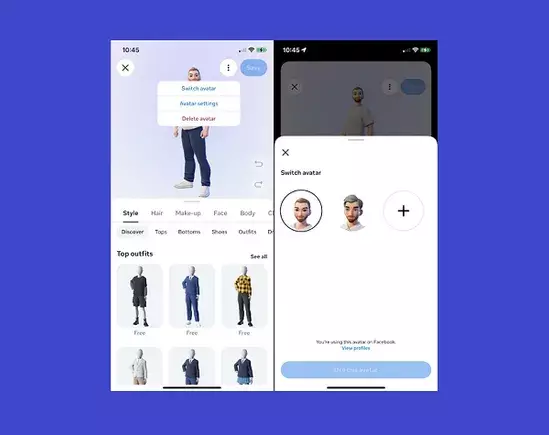In an era where digital platforms increasingly mirror our identities, Meta’s introduction of multiple avatars signifies a bold step towards personalized self-representation. While initially, avatars might have seemed like simple profile pictures or playful emojis, their evolution into diverse, customizable digital personas challenges us to rethink how we present ourselves online. Meta’s multi-avatar feature offers users an unprecedented level of flexibility, allowing for varied depictions of one’s personality, mood, or creative expression across various platforms like Facebook, Messenger, and Instagram.
This capability might initially seem trivial or purely aesthetic, but it taps into deeper psychological and social needs. Having multiple avatars enables users to craft distinct identities tailored to specific contexts—be it professional, casual, or artistic. It accentuates the growing importance of digital personas in shaping personal and social narratives, giving users the tools to experiment freely without the permanence associated with traditional profile photos. Yet, beneath the surface, one must question whether this proliferation of digital selves might dilute authenticity or foster a fragmented sense of identity.
Advanced Customization: An Expanding Digital Canvas
Meta’s ongoing commitment to refining avatar creation tools demonstrates a desire to empower users with expansive customization options. From adding diverse body types to intricate hairstyles, facial features, makeup, and accessories, the platform broadens the spectrum of expressive possibilities. For example, the recent introduction of generative AI-driven retexturing tools allows creators—especially within Meta’s Horizon Creator Portal—to design unique clothing textures and accessories, elevating avatar customization from simple caricatures to detailed digital representations.
The multitude of options isn’t just about aesthetics; it’s a strategic move that integrates avatars into Meta’s broader metaverse ambitions. These digital characters are envisioned as integral participants within augmented reality (AR) and virtual reality (VR) environments, enabling immersive social experiences. Imagine a future where your avatar isn’t just a static image but a fully animated, expressive figure capable of nuanced interactions, emotes, and personalization. Such developments highlight Meta’s vision of decentralizing self-expression and making digital identities as complex and dynamic as real-world personalities.
Impact on Social Interaction and Identity Fluidity
While the technical advancements are impressive, one must critically assess the social implications. The shift towards multiple customized avatars offers a double-edged sword. On one hand, it fosters creative freedom and can bolster community engagement—users experiment with various styles to find what resonates most or simply have fun. The ability to create new avatars rapidly and use them across different content forms—stickers, posts, or even AR filters—encourages more vibrant and individualized digital dialogues.
Conversely, this fluidity risks encouraging superficiality or even deception. When avatars become highly customizable, the line between authentic self-presentation and curated digital personas blurs. Users might curate idealized or exaggerated versions of themselves, impacting genuine social connection. Furthermore, if certain avatar styles or features become more popular, it could inadvertently foster conformity under the guise of diversity, pressuring users to adopt specific visual trends to stay relevant or accepted.
The Future of Digital Identity: Opportunity or Challenge?
Meta’s persistent efforts to enhance avatar capabilities reflect a nuanced vision: to use digital characters as bridges to richer, more engaging virtual worlds. Yet, fostering a sense of authentic connection amidst a landscape populated by endless variations remains a formidable challenge. Does increased customization enhance self-expression or contribute to identity fragmentation? Are users genuinely finding new ways to connect, or are avatars becoming a substitute for meaningful human interaction?
As these virtual personas become more sophisticated and integrated into our daily digital lives, society must grapple with the implications of a future where our digital selves could outweigh or even replace our physical identities. Meta’s evolving avatar ecosystem offers exciting opportunities for creative expression and social interaction but also demands a critical eye on issues of authenticity, identity stability, and social impact. If used thoughtfully, these tools have the potential to transform online communication—but if mishandled, they risk fostering disconnection amidst the illusion of personalization.

